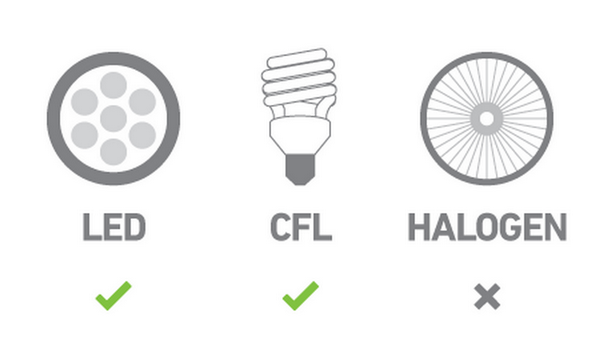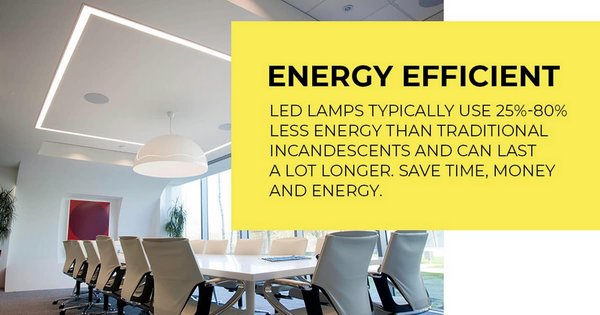In recent years, the demand for energy-efficient lighting solutions has surged, driven by the need for sustainability and cost savings. Custom LED lenses play a pivotal role in enhancing the energy efficiency of lighting systems. This article explores how these lenses contribute to energy efficiency, their design innovations, and their applications across various sectors.
Understanding Custom LED Lenses
Custom LED lenses are optical devices specifically designed to manipulate the light emitted from LED sources. Unlike standard lenses, which have fixed properties, custom lenses can be tailored to meet specific requirements, allowing manufacturers to create unique lighting effects and improve energy efficiency. These lenses are crucial in determining the quality, intensity, and distribution of light, making them essential components in modern lighting design. By utilizing advanced optical engineering techniques, manufacturers can create lenses that not only enhance the performance of LEDs but also cater to the aesthetic and functional needs of various environments.
The Importance of Energy Efficiency
Energy efficiency in lighting is not just about reducing electricity consumption; it also involves maximizing the effectiveness of light output. Traditional lighting solutions, such as incandescent and fluorescent bulbs, often waste a significant amount of energy as heat. In contrast, LED technology, combined with custom lenses, offers a more efficient alternative. LEDs consume less power and have a longer lifespan, making them a more sustainable choice. The shift towards energy-efficient lighting is not only beneficial for reducing utility bills but also plays a critical role in minimizing the carbon footprint associated with energy production. As global awareness of environmental issues grows, the demand for energy-efficient solutions continues to rise.

How Custom LED Lenses Enhance Energy Efficiency
1. Optimized Light Distribution
One of the primary ways custom LED lenses contribute to energy efficiency is through optimized light distribution. By focusing and directing light more effectively, these lenses minimize light loss. This means that less energy is required to achieve the desired illumination levels. For instance, in commercial buildings, the implementation of custom lenses can lead to significant reductions in energy costs while maintaining adequate lighting levels. This optimization not only enhances the visual comfort of occupants but also ensures that energy is used judiciously, aligning with sustainability goals. Moreover, the ability to tailor light distribution patterns allows for innovative designs that can transform spaces while conserving energy.
2. Reduced Glare and Light Pollution
Custom LED lenses can be designed to reduce glare and light pollution, which are common issues with traditional lighting solutions. By controlling the direction and intensity of light, these lenses ensure that light is directed where it is needed most, rather than scattering it indiscriminately. This not only enhances the comfort of occupants but also contributes to energy savings by reducing the need for additional lighting. Furthermore, minimizing light pollution is crucial for preserving nighttime environments and protecting wildlife. As urban areas expand, the importance of effective lighting solutions that respect both human and ecological needs becomes increasingly evident.
3. Tailored Solutions for Specific Applications
Different environments require different lighting solutions. Custom LED lenses can be designed for specific applications, such as street lighting, architectural lighting, or indoor spaces. For example, street lighting requires steady, constant light to enhance public safety while minimizing energy consumption. Custom lenses can concentrate light specifically on roads and footpaths, ensuring that energy is used efficiently. This tailored approach not only improves safety and visibility but also allows municipalities to reduce their energy expenditures significantly. By investing in custom solutions, cities can create more livable environments while adhering to budgetary constraints.
4. Enhanced Lifespan of Lighting Fixtures
The integration of custom LED lenses can also extend the lifespan of lighting fixtures. By improving heat dissipation and reducing the strain on LED components, these lenses help maintain optimal operating conditions. This not only reduces the frequency of replacements but also contributes to lower overall energy consumption, as fewer resources are needed for manufacturing and disposal. Additionally, longer-lasting fixtures mean less waste in landfills, aligning with broader environmental goals. The durability of custom LED lenses ensures that lighting systems remain effective over time, providing consistent performance and reliability.
5. Compatibility with Smart Lighting Systems
As the lighting industry moves towards smart technology, custom LED lenses can be integrated into smart lighting systems that adjust brightness based on occupancy and natural light levels. This adaptability further enhances energy efficiency, as lights can be dimmed or turned off when not needed, significantly reducing energy usage. The integration of sensors and automation not only optimizes energy consumption but also enhances user experience by providing tailored lighting solutions that respond to real-time conditions. As smart cities continue to develop, the role of custom LED lenses in these systems will become increasingly vital.
Innovations in Custom LED Lens Design
The field of custom LED lens design is continually evolving, with innovations that further enhance energy efficiency. Some of the latest trends include:
1. Advanced Materials
The use of advanced materials in lens manufacturing can improve light transmission and reduce energy loss. Materials that are more transparent and have better optical properties can enhance the performance of LED lighting systems. Innovations in material science are leading to the development of lenses that not only perform better but are also more environmentally friendly. For instance, the use of recyclable materials in lens production can further reduce the environmental impact of lighting solutions.
2. 3D Printing Technology
3D printing technology allows for the rapid prototyping and production of custom lenses. This not only reduces manufacturing costs but also enables the creation of complex designs that can optimize light distribution and energy efficiency. The flexibility of 3D printing means that manufacturers can quickly adapt to changing market demands and customer preferences, leading to more innovative and effective lighting solutions. This technology also facilitates the production of small batches, allowing for greater customization without the need for large-scale manufacturing processes.
3. Integration with IoT
The integration of custom LED lenses with Internet of Things (IoT) technology allows for real-time monitoring and adjustments. This capability can lead to significant energy savings by ensuring that lighting is only used when necessary. IoT-enabled lighting systems can analyze usage patterns and adjust accordingly, providing optimal lighting conditions while minimizing energy waste. As the demand for smart home and building technologies grows, the ability to integrate custom LED lenses into these systems will be a key factor in their success.
Applications of Custom LED Lenses
Custom LED lenses are used in a variety of applications, each benefiting from their unique properties:
1. Commercial Lighting
In commercial settings, custom LED lenses can enhance the aesthetic appeal of spaces while ensuring energy efficiency. By providing tailored light distribution, these lenses help create inviting environments that reduce energy costs. Businesses can leverage the benefits of custom lighting to improve employee productivity and customer satisfaction, making it a worthwhile investment. The ability to create different lighting atmospheres can also enhance branding and marketing efforts, as lighting plays a crucial role in shaping customer perceptions.
2. Street Lighting
Street lighting requires a balance between visibility and energy efficiency. Custom lenses can focus light on roadways and sidewalks, improving safety while minimizing energy consumption. This targeted approach not only enhances public safety but also allows municipalities to reduce their energy expenditures significantly. By investing in energy-efficient street lighting solutions, cities can create safer environments for pedestrians and drivers alike, while also contributing to sustainability goals.
3. Architectural Lighting
Architects and designers use custom LED lenses to highlight building features and create dramatic effects. The ability to customize beam angles and light distribution enhances the visual impact of structures while ensuring energy efficiency. This creative use of lighting can transform ordinary spaces into extraordinary experiences, showcasing architectural details and enhancing the overall aesthetic appeal. As the demand for unique and visually striking designs grows, the role of custom LED lenses in architectural lighting will continue to expand.
4. Automotive Lighting
In automotive applications, custom LED lenses are used in headlights and taillights to improve visibility and safety. These lenses can be designed to focus light precisely, reducing glare for oncoming drivers and enhancing overall road safety. The integration of custom lenses in automotive lighting not only improves functionality but also contributes to the aesthetic appeal of vehicles. As the automotive industry shifts towards more energy-efficient technologies, the role of custom LED lenses will become increasingly important.
5. Indoor and Outdoor Lighting
Whether for residential or commercial use, custom LED lenses can be tailored to meet specific lighting needs. From creating a warm ambiance in living rooms to illuminating large outdoor spaces, these lenses provide the flexibility required for diverse applications. The ability to customize lighting solutions ensures that they meet the unique requirements of each environment, enhancing both functionality and aesthetics. As consumer preferences evolve, the demand for versatile and energy-efficient lighting solutions will continue to grow.

Conclusion
Custom LED lenses are a vital component in the quest for energy-efficient lighting solutions. By optimizing light distribution, reducing glare, and extending the lifespan of fixtures, these lenses contribute significantly to energy savings and sustainability. As technology continues to advance, the role of custom LED lenses in enhancing energy efficiency will only grow, making them an essential consideration for manufacturers and designers alike. The ongoing innovations in lens design and materials will further enhance their effectiveness, ensuring that they remain at the forefront of energy-efficient lighting solutions.
Frequently Asked Questions
1. What are custom LED lenses?
Custom LED lenses are optical devices designed to manipulate light emitted from LED sources, tailored to meet specific requirements for various applications.
2. How do custom LED lenses improve energy efficiency?
They optimize light distribution, reduce glare, and extend the lifespan of lighting fixtures, leading to lower energy consumption.
3. What materials are used in custom LED lens manufacturing?
Advanced materials that enhance light transmission and reduce energy loss are commonly used in the production of custom LED lenses.
4. Can custom LED lenses be integrated with smart lighting systems?
Yes, they can be integrated with IoT technology to allow for real-time monitoring and adjustments, further enhancing energy efficiency.
5. What are some applications of custom LED lenses?
They are used in commercial lighting, street lighting, architectural lighting, automotive lighting, and both indoor and outdoor lighting solutions.





